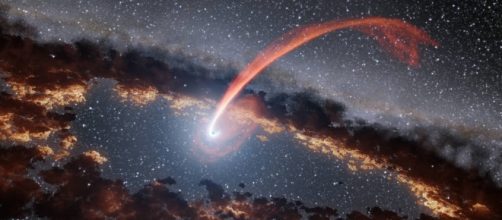This is the first time that astronomers were able to measure fluctuating temperatures of hot gases being ejected by a black hole situated in the galaxy IRAS 13224-3809 in the direction of the constellation Centaurus. The winds, which can rise in temperature and cool in only a few hours, can provide insights into the way these extreme winds evolve and the amount of energy that they add to the surrounding environment. The images from this discovery were obtained by NASA`s Nuclear Spectroscopic Telescope Array (NuSTAR).
Black holes
These astronomical bodies are very huge regions of space and time that exert extreme gravitational pull on the objects surrounding them that nothing can escape from inside of them; not even light.
The boundary at which nothing can escape their gravitational force is called the event horizon. This massive bodies form when very massive stars collapse at the final stages of their life cycle. After their formation, these bodies can continue to grow by accruing matter from their surroundings, absorbing other stars or merging with other Black Holes.
Ultrafast winds that fluctuate in temperature
Although black holes cannot be detected by a telescope, their presence is usually inferred by their interaction with galaxies and stars. The matter that is absorbed by black holes usually forms an accretion disk that rises in temperature by friction, ejecting very fast streams of hot gas that create ultrafast winds that permeate their host galaxy.
These winds may heat up and cool down in a very short time period encompassing a few hours.
Ultrafast winds starting star formation
Super massive black holes normally have a surrounding disk of gas and dust orbiting them. It is the matter of this accretion disk from which these bodies accrue their mass. Before their accrued matter starts emitting hot gas and dust (jets) into space, their ultrafast winds can start the formation of stars by dispersing large amounts of heated gas in their host galaxy. This is the first time that heated winds are seen interacting with a black hole`s radiation.
The study of black hole high-temperature winds
To research into these high-velocity winds, scientists examined X-rays emanating from the edge of the black hole.
As the X-rays travel through the winds, some wavelengths are absorbed by iron and magnesium contained within the winds. This absorption provides information about the composition of the winds. The absorption lines, which appear and disappear in the time span of a few hours revealed that the X-rays were causing the rise in temperature - millions of degrees Fahrenheit.

